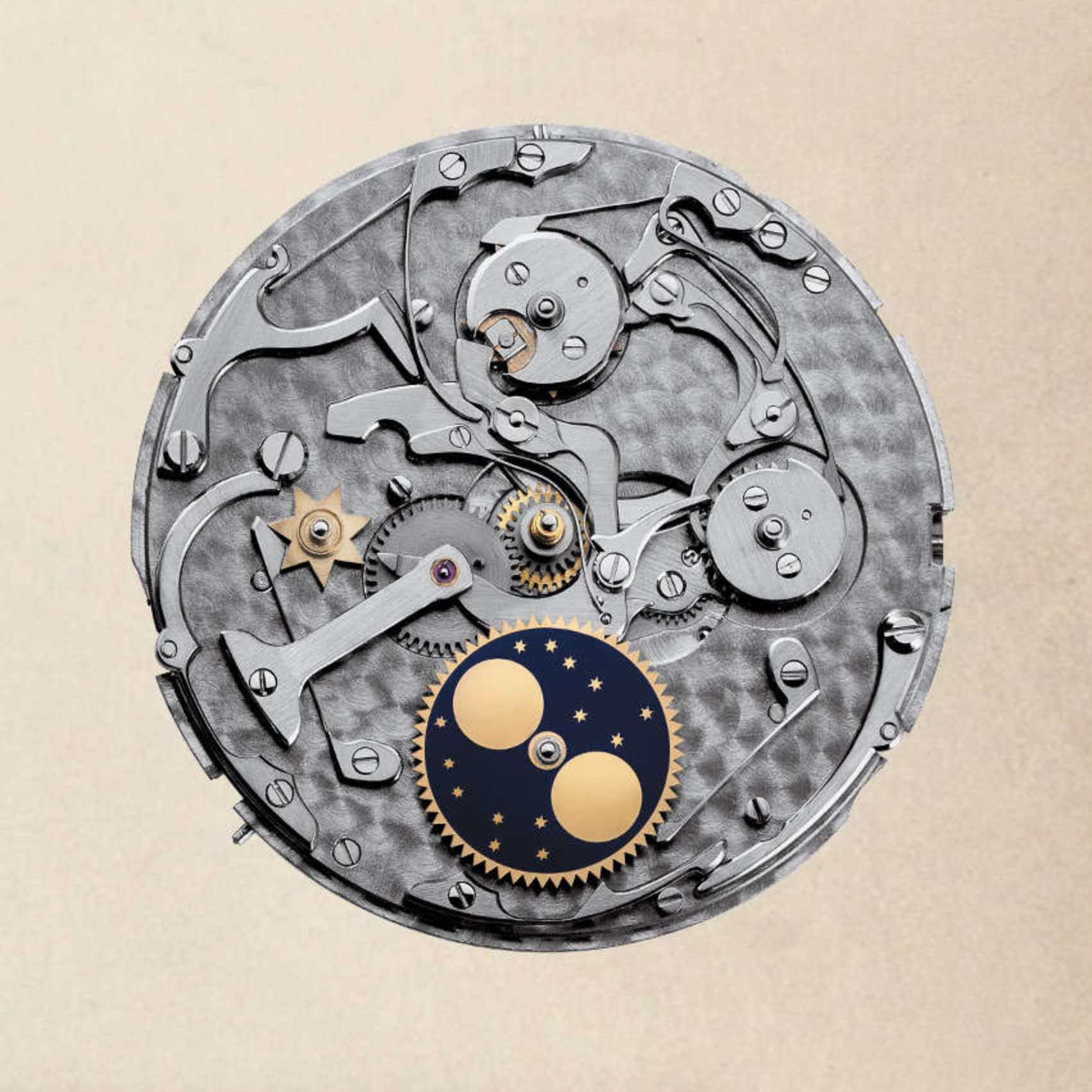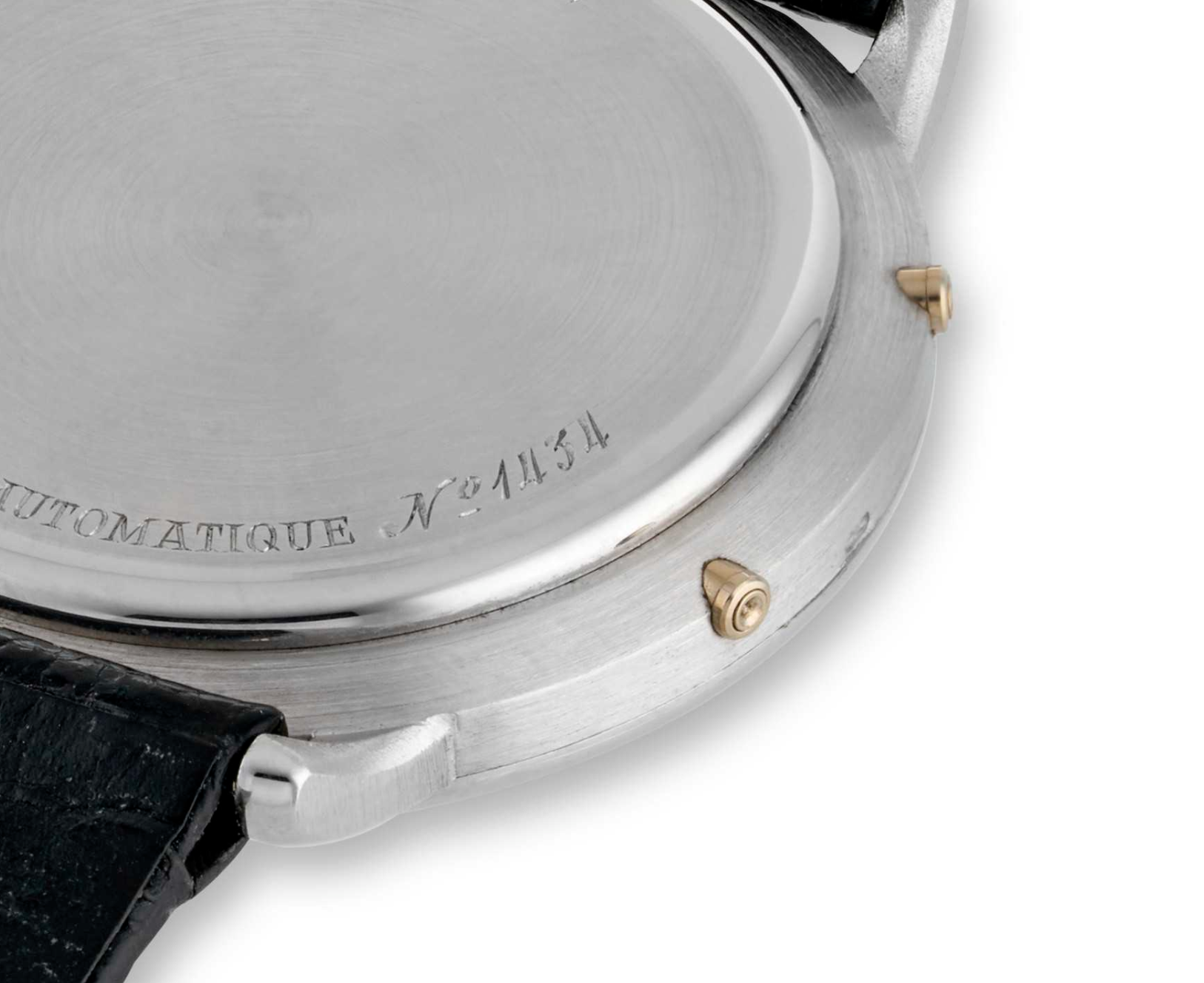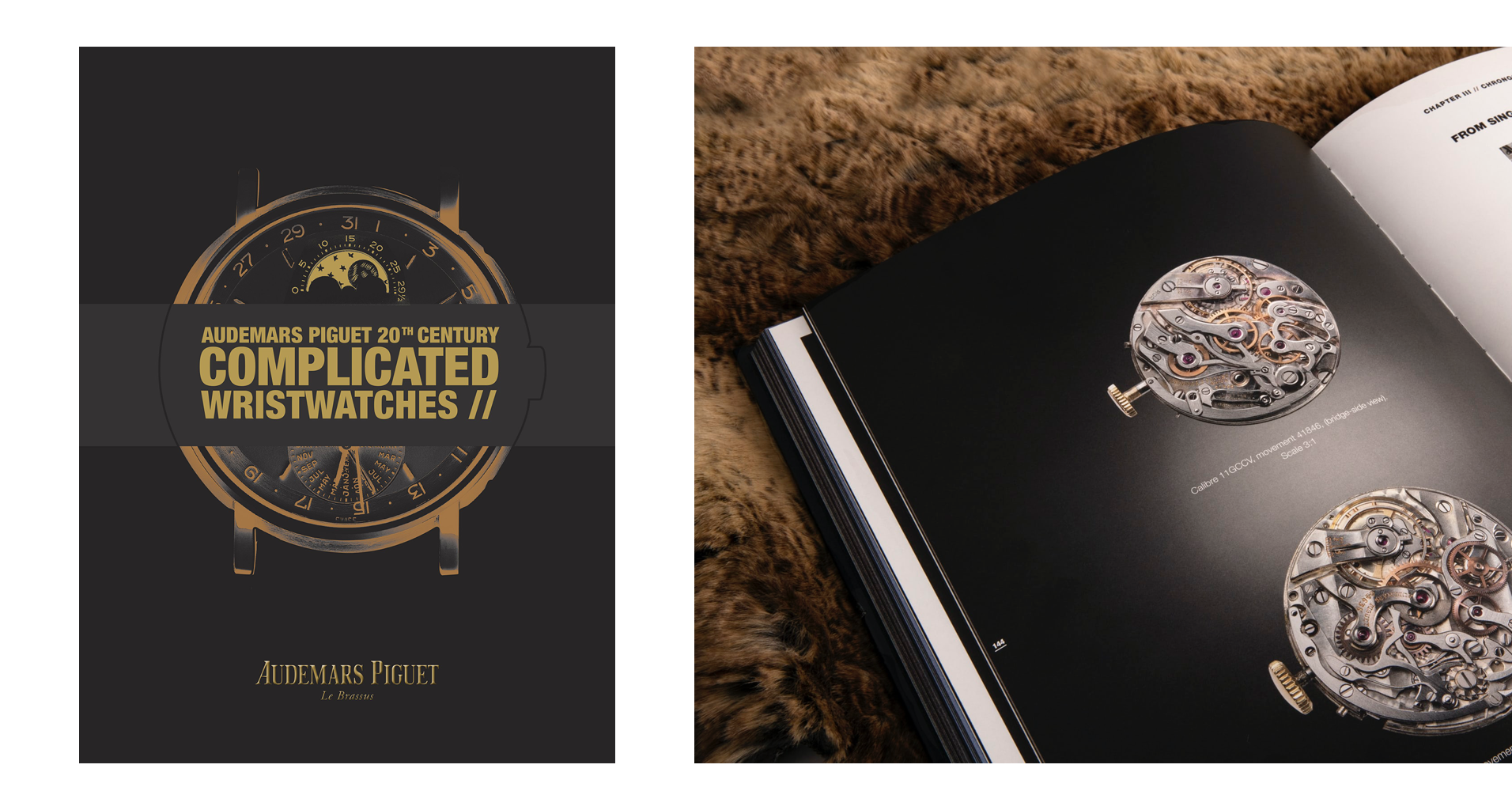Reference Talk — Audemars Piguet Quantième Perpétual
Credit: Watch Collecting Lifestyle
Conceived in secret and launched in the midst of the quartz crisis, Audemars Piguet’s 1978 release of the world’s thinnest self winding perpetual calendar wristwatch was one of the greatest horological innovations of the late 1970s.
A specialist in the manufacture of complications since it was established, Audemars Piguet introduced the worlds thinnest automatic perpetual calendar in 1978, a return to their complication roots after a period focusing on elegant dress watches.
The project was originally worked on in secret due to the vision being so drastically different to the watch landscape at the time, the quartz crisis had hit and smaller watches were in high demand. Michel Rochat - veteran watchmaker, Jean - Daniel Golay - founder of the technical department and Wilfred Berney - founder of the after-sales service department developed the ultra-thin 3.95mm calibre through the adaptation and introduction of a calendar module to the base of the calibre 2120 movement that was previously launched in 1967.
The trio presented their prototypes to Georges Golay, the Chief Executive of Audemars Piguet who had been at the helm for the last 15 years. Golay was quick to recognize the importance of this groundbreaking work and commissioned a run of 159 perpetual calendars to great success.
It is commonly thought that the Royal Oak was the savior for Audemars Piguet during the quartz crisis however the crucial role played by the perpetual calendar is often forgotten. This new perpetual calendar calibre provided stability but more importantly growth for the company, evident through the workforce almost doubling under its tenure.
Audemars Piguet produced a total of 7219 perpetual calendars over the 15 years of production with an astonishing 70 different models (often produced in parallel) with roughly 200 variations been documented. These figures include the Royal Oak Perpetual Calendar Models. The reference 5548(25548) was the first and dominant reference accounting for 2187 of the total watches produced in this time however an overwhelming majority of models were produced in runs fewer than 100 with some models being produced in just a single example.
Specifications
36 mm case diameter, 7-7.8mm thick dependent on variant
Ultra-thin calibre 2120/2800 automatic perpetual calendar
Correctors on the case at 4, 8, and 10 o'clock
Four symmetrical white subsidiary dials, featuring a month indicator at 12 o'clock, date at 3 o'clock moon phase at 6 o'clock, and day register at the 9 o'clock position.
Ultra-thin Calibre 2120/2800 Credit: Audemars Piguet
A deep-dive into a handful of the most popular and sought after references
Reference 5548 (25548)
Production 1978 -1991
5548BA (aftermarket bracelet) Credit: Christie’s
Jaqulin Dimmer, famed for her incredible contribution to the Royal Oak, was the design mastermind behind the original 5548 Perpetual Quantieme. The 5548 was her playground from which she went on to design a vast number of magnificent models and variations.
The reference 5548 is famously the first wristwatch to be fitted with the ultra-thin calibre 2120/2800 and went on to become a huge success for the company, the most prolific perpetual calendar in its time for Audemars Piguet, selling at its peak 675 examples in a single year. The reference 5548 can be found across both B & early C series.
Transition to (25548)
Like all 4 digit models the 5548 was given the additional ‘2’ towards the end of 1984 to become the 25548 until it ceased production in 1991. The ref. 25548 can be found in the C series range.
Production Numbers & Metals
Total production documented at 2183 pieces (5548/25548). Yellow gold was by far the dominant case metal with 2070 examples, followed by white gold with 80 examples, platinum with 32 examples, steel with 4 examples and pink gold with 1 example.
Early Examples - ‘Swiss Only & Case-back Hallmarks’
‘Swiss’ only, 5548BA Credit: Christie’s
Early ref. 5548 are signed ‘Swiss’ only, this is located below the minute track. The dial is most commonly seen in opaline white (lacquer finish) contrasted by the deep blue sub-dial indicators. The sub-dials at 12, 3 and 9, are enclosed between two thin black strokes with the 6 o’clock sub dial marked as an open semi circle. The dial features elegant applied index markers complementing nicely the pointed stick hands and deep blue sub-dial indicators.
The case features a double stepped bezel with down-turned short lugs, the 3 setting pushers protruding visibly from the case. The hallmarks can be found clearly stamped on the case-back only (inside and out). The Quantieme Perpetual Automatique is infamously confused for an annual calendar due to the lack of a leap year indicator on the dial. The leap year can only be set by a watchmaker and the year was indicated via documentation provided at point of sale.
Case-back, 5548BA Credit: Black Bough
Case-back, 5548BA Credit: Black Bough
Later examples ‘Dial & Case Updates’
Around 1982/84 ‘Swiss Made’ began to appear at the 6 o’clock on the dials, similar to other models in the Audemars Piguet lineup at that time. Ref. 25548 being introduced in 1984 should feature the ‘Swiss Made’ dial.
As for the case, hallmarks began to appear on both the 9 o’clock side of the case as well as the case back from 1982. With the later ref. 25548’s also adopting the modified case, introduced to improve the resistance to moisture (details on this case upgrade covered further down).
‘Swiss Made’, 25548BC Credit: Christie’s
Hallmarks on case side, 25548BC Credit: Christie’s
Reference 25657
Production 1982 - 1993
Sunken Sub-dials, 25657PT Credit: A Collected Man
While many believe the reference 25657 superseded the 24558 it was actually produced in parallel for around 8 years after its introduction in 1982. Parallel production as mentioned previously was very common across the perpetual calendar offering throughout the 15 year production. This reference can be found in both C and D series.
Production Numbers & Metals
Total production documented at 1821 pieces. Yellow gold was again by far the dominant case metal with 1309 examples, followed by pink gold with 362 examples, platinum with 128 examples, white gold with 16 examples, two tone with 5 examples and steel with 1 example.
Key Characteristics - ‘Sunken Sub-dials’
The dial of a Ref. 25657 most noticeably features ‘sunken’ sub-dials at the 12, 3 and 9 o’clock positions, these sub-dials have an inner black stroke only. The dial is signed ‘Swiss Made’ with some of the later examples featuring the capitalized ‘A’ and ‘P’ logo, consistent with the visual update made by Audemars Piguet during this time period.
The reference 25657 has surface in a wide variety of interesting dials including the stunning ‘Engine Turned’ variation.
25657BA Credit: Heavyisthewrist - Instagram
‘Engine turned’ dial, 25657BA Credit: WristWatch Magazine
Modified Case Construction in the late 1980’s
Later Case Credit: Watch Collecting Lifestyle
During the mid to late 80’s Audemars Piguet made significant improvements to the case to increase its performance against moisture.
The introduction of the new case design can be seen across a large number of QP references that were produced around this period due to the common overlapping production periods, including some of the references mentioned in this article such as the 25548 and 25657.
Case Back & Pushers
The case-back of early examples are heavily rounded towards the edge compared to the gradual sloped profile of later examples. This can be seen by observing distance from the outer edge of the case to the case-back engraving.
Early case, Credit: A Collected Man
Later case, Credit: A Collected Man
Setting pushers are present on both sides of the case. Early cases exhibit an extruding profile whereas later examples sit almost flush with the case side when looking from front/back. Furthermore later cases bolstered the protective surround for pushers, early extruding pushers are somewhat exposed, floating off the side section of the case.
Early case, Credit: A Collected Man
Later case, Credit: A Collected Man
Bezel & lugs
Looking at the side profile of the watch there are a number of differences. The bezel depth differs with early examples sitting taller than their later counterparts. Early case lugs feature a more rounded nose where later examples are blunt in appearance, they also intrude into the bezel part ever so slightly.
Early case, Credit: A Collected Man
Later case, Credit: A Collected Man
Reference 25661 ‘Display Back’
Production 1985 - 1994
‘Salmon Dial’ 25661BC Credit: Ciaca70 - Instagram
Often mistaken for reference 25657 the reference 25661 offers a visually treat courtesy of a snap-on sapphire crystal display back, highlighting the incredibly craftsmanship of the ultra-thin movement. This reference can be found in late C and early D series.
Production Numbers & Metals
Total production documented at 342 pieces. Yellow gold with 244 examples, followed by white gold with 32 examples, pink gold with 29 examples and platinum with 37 examples.
Key Characteristics - ‘Sunken Sub-dials & Sapphire Case-back’
Introduced just 3 years after the ref. 25657 production of the ref. 25661 ran in parallel with most design features being shared across the references such as the sunken sub-dials. The ref. 25661 is known for its interesting variety of dial types from the ‘Salmon’ dial to the ‘Tuscan’.
As well as the clear case-back the ref. 25661 appears to have been produced with the later updated case only, as discussed above, with the hallmarks and engravings for the serial and production number stamped on the case side/underside. Compared to the solid case back models, the sapphire case-back increases the overall thickness ever so slightly.
Interestingly the Platinum examples featured a decorative finish throughout the movement, whereas the other metals only received this treatment on the rotor.
Reference 25661 Movement Examples
25661PT Credit: Punta Del Este - Rolex Forum
25661BC Credit: A Collected Man
Reference 25661 Dial Examples
‘Breguet Numerals’ 25661PT Credit: Punta Del Este - Rolex Forum
‘Tuscan Dial’ 25661PT Credit: Antiquorum
Reference 25558 & 25668 ‘Openwork’
Production mid 80’s - mid 90’s
25668PT & BA Credit: Ciaca70 - Instagram
Openworking is about transparency, highlighting the mechanics while at the same time providing a unique visual appeal. All of this is done without without compromising the accuracy of the watch.
When it was released, while visually breathtaking, collectors didn't share the same level of enthusiasm for them as they do today.
The ref. 25558 is the earlier and first iteration of the model featuring the earlier extruding pusher case. The later ref. 25668 features the upgrade case.
Production Numbers & Metals
Total ref. 25558 production documented at 217 pieces. Yellow gold with 154 examples, followed by platinum with 62 examples and white gold with 1 example.
Total ref. 25668 production documented at 205 pieces. Yellow gold with 94 examples, followed by platinum with 79 examples, pink gold with 30 examples and white gold with 2 examples.
Key Characteristics - ‘Open dial and case-back, highly decorated movement’
Building upon the ref. 25661 display case-back Audemars Piguet unveiled the Openwork, with clear visual access to both the front and back of the movement. The Openwork demonstrates the incredible craftsmanship that goes into hand finishing each movement, from the flanking, beveling, engraving and polishing.
Ref. 25558 vs ref. 25668 case
Ref. 25558 case Credit: Watch Brothers London
Ref. 25668 case Credit: Amsterdam Vintage Watches
Front and back
25668BA Credit: Watch Collecting Lifestyle
25668BA Credit: Watch Collecting Lifestyle
Case metals and dials
25668PT (platinum) w/ blue sub dials, Credit: SteveG
25668PT (platinum) w/ white sub dials, doyle.com
25558BA (yellow gold), Credit: Watch Brothers London
25668OR (pink gold), Credit: Christie’s
Calibre 2120/2800
Credit: Audemars Piguet
The calibre 2120/2800, developed in secrecy, revolutionized the perpetual calendar not just for Audemars Piguet but the watchmaking industry as a whole.
As mentioned at the start the 2120/2800 was the brain child of 3 watchmakers with Michel Rochat, who went on to work at Audemars Piguet for 34 years, initiating the project. Working closely with Jeam-Daniel Golay founder of the technical department, they created the first mockups out of cardboard with blueprints developed with the help of the Vallée de Joux horological school. The 3rd accomplice, Wilfred Berney, brought the suggestion of matching the 2120 movement, first seen in 1967, with the calendar module. Berney was the was the founder of the after-sales service at Audemars Piguet. The worlds thinnest self winding movement combined with the ultra thin perpetual calendar resulted in the legendary 2120/2800.
Over the 15 years of production the ultra thin calibre underwent multiple technical developments with 7 major modifications undertaken to the perpetual calendar underdial work.
Reference: WristWatch Magazine
Credit: WristWatch Magazine
Contributors
Huge thanks to all who contributed on this project. I would like to call out @ciaca70, @watches_and_guinness & @watchdilettante for their time and knowledge, it couldn’t have happened without you. I would also like to thank Christie’s and A Collected Man for their rich imagery and Audemars Piguet for their documentation.
This article is an ongoing project and will be updated as new information arises. If you have any information you’d like to contribute please contact Ben on Instagram - WatchBrothersLondon or via email - ben@watchbrotherslondon.com
Further QP Content
Highly Recommend - Audemars Piguet: 20th Century Complicated Wristwatches
A book dedicated entirely to the history of the manufacturers complicated wristwatches, following 4 years of Archival research and writing on the part of the Heritage Department.
Credit: Amazon & HODINKEE






